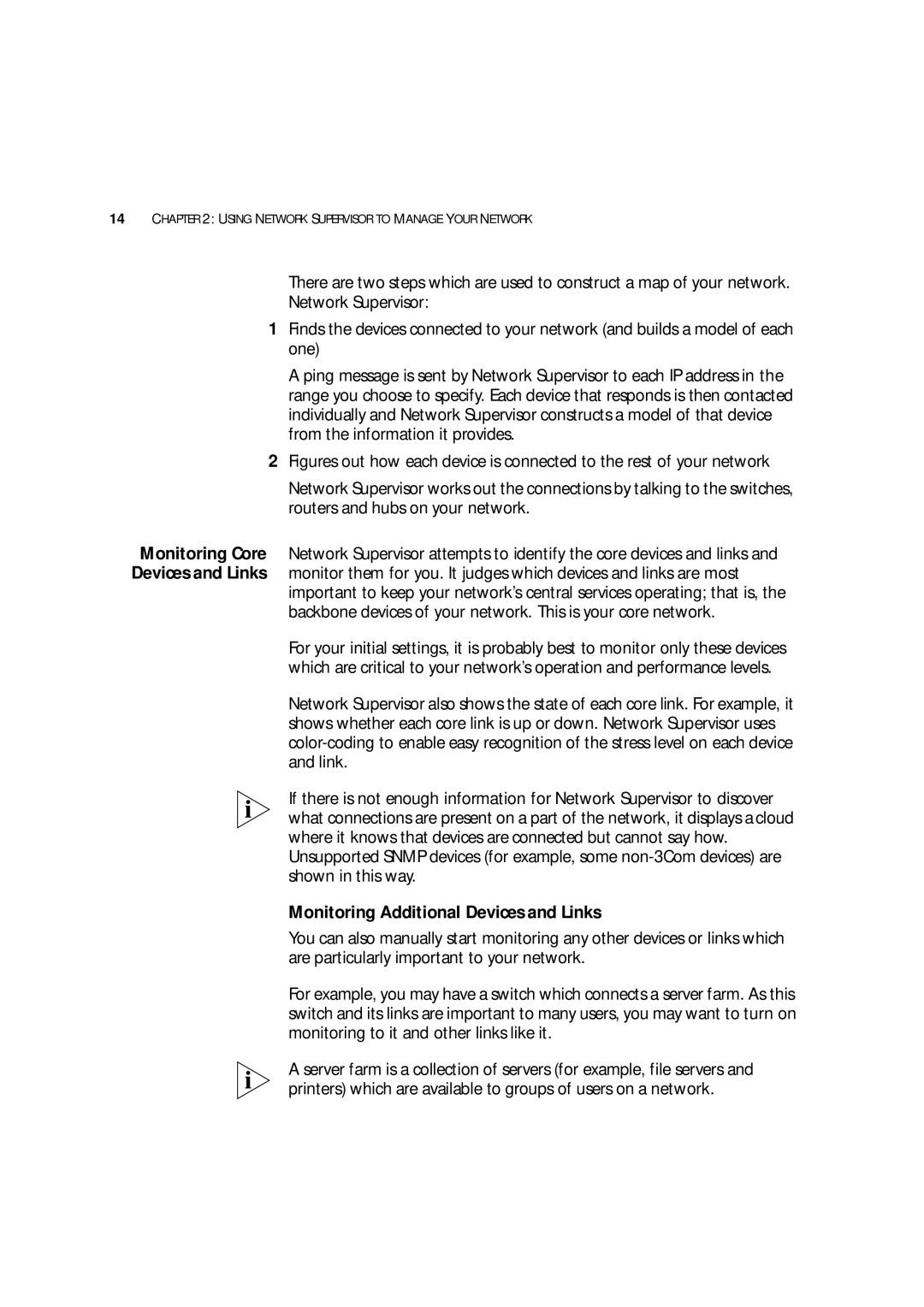14CHAPTER 2: USING NETWORK SUPERVISOR TO MANAGE YOUR NETWORK
There are two steps which are used to construct a map of your network.
Network Supervisor:
1Finds the devices connected to your network (and builds a model of each one)
A ping message is sent by Network Supervisor to each IP address in the range you choose to specify. Each device that responds is then contacted individually and Network Supervisor constructs a model of that device from the information it provides.
2Figures out how each device is connected to the rest of your network
Network Supervisor works out the connections by talking to the switches, routers and hubs on your network.
Monitoring Core Network Supervisor attempts to identify the core devices and links and Devices and Links monitor them for you. It judges which devices and links are most
important to keep your network’s central services operating; that is, the backbone devices of your network. This is your core network.
For your initial settings, it is probably best to monitor only these devices which are critical to your network’s operation and performance levels.
Network Supervisor also shows the state of each core link. For example, it shows whether each core link is up or down. Network Supervisor uses
If there is not enough information for Network Supervisor to discover what connections are present on a part of the network, it displays a cloud where it knows that devices are connected but cannot say how. Unsupported SNMP devices (for example, some
Monitoring Additional Devices and Links
You can also manually start monitoring any other devices or links which are particularly important to your network.
For example, you may have a switch which connects a server farm. As this switch and its links are important to many users, you may want to turn on monitoring to it and other links like it.
A server farm is a collection of servers (for example, file servers and printers) which are available to groups of users on a network.
